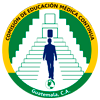Characterization of pediatric patients with tumor oncological diagnosis using the immunohistochemistry technique
DOI:
https://doi.org/10.61997/bjm.v14i2.476Keywords:
Antigens, Neoplasm, Biomarkers, Tumor, Pediatrics, ImmunohistochemistryAbstract
Background: Immunohistochemistry is an immunostaining technique that uses specific antibodies to detect antigens in cellular and extracellular tissues that guide the diagnosis and treatment of neoplasms. Objective: To characterize pediatric patients with tumor oncological diagnosis using the immunohistochemical technique. Methods: Cross-sectional retrospective study, carried out in the Pediatric Hemato-oncology Service and the Pathology Department of the Hospital Escuela, where the immunohistochemistry laboratory has been operating since 2019. 458 clinical records of pediatric patients who were managed during the study period with tumor oncological diagnosis were reviewed, and 122 which had an immunohistochemical report were selected. For the analysis, tables and graphs of frequencies and percentages, central tendency and dispersion measures were generated. Results: The mean age was 9.9 (SD+/-4.9; range: 6 months to 16 years), male 56.6% (69/122); urban origin 78.7% (96/122). The immunohistochemistry report was positive for 95.9% (117/122) of tumoral neoplasia, identifying the antigen specifically associated with lymphomas, Ewing tumors and germ cell tumors. 23.8% of the patients died (29/122); with statistical association between start of management only with histopathology report and hospital discharge condition (alive/died) (p=0.013). Conclusions: The immunohistochemistry testing demonstrated high diagnostic sensitivity, with a low false-negative rate and adequate correlation with histopathology, contributing to the correct identification of the tumor marker.
Downloads
References
Hartmann E, Missotte I, Dalla-Pozza L. Cancer Incidence Among Children in New Caledonia, 1994 to 2012. J Pediatr Hematol Oncol. 2018; 40(7):515-21. doi: 10.1097/mph.0000000000001255 DOI: https://doi.org/10.1097/MPH.0000000000001255
Organización Panamericana de la Salud, Organización Mundial de la Salud. Diagnóstico temprano de cáncer en la niñez. Washington, D.C.: Organización Panamericana de la Salud; 2014. Disponible en: https://iris.paho.org/bitstream/handle/10665.2/34851/9789275318461-spa.pdf
Federico SM, Pappo AS, Sahr N, Sykes A, Campagne O, Stewart CF, et al. A phase I trial of talazoparib and irinotecan with and without temozolomide in children and young adults with recurrent or refractory solid malignancies. Eur J Cancer. 2020; 137:204-13. doi: 10.1016/j.ejca.2020.06.014 DOI: https://doi.org/10.1016/j.ejca.2020.06.014
Sukswai N, Khoury JD. Immunohistochemistry Innovations for Diagnosis and Tissue-Based Biomarker Detection. Curr Hematol Malig Rep. 2019; 14(5):368-75. doi: 10.1007/s11899-019-00533-9 DOI: https://doi.org/10.1007/s11899-019-00533-9
Chinchilla-Tabora LM, Ortiz Rodriguez-Parets J, Gonzalez Morais I, Sayagues JM, Ludena de la Cruz MD. Immunohistochemical Analysis of CD99 and PAX8 in a Series of 15 Molecularly Confirmed Cases of Ewing Sarcoma. Sarcoma. 2020; 2020:3180798. doi: 10.1155/2020/3180798 DOI: https://doi.org/10.1155/2020/3180798
Galactica Z, Feldman R, Vranic S, Spetzler D. Inmunohistochemistry-Enabled Precision Medicine. Phoenix, AZ, USA: Springer Nature Switzerland; 2019; 178: 111-35. doi: 10.1007/978-3-030-16391-4_4 DOI: https://doi.org/10.1007/978-3-030-16391-4_4
Magro G, Longo FR, Angelico G, Spadola S, Amore FF, Salvatorelli L. Immunohistochemistry as potential diagnostic pitfall in the most common solid tumors of children and adolescents. Hum Pathol. 2015; 117(4-5):397-414. doi: 10.1016/j.humpath.2016.07.038 DOI: https://doi.org/10.1016/j.acthis.2015.03.011
Merabi Z, Boulos F, Santiago T, Jenkins J, Abboud M, Muwakkit S, et al. Pediatric cancer pathology review from a single institution: Neuropathology expert opinion is essential for accurate diagnosis of pediatric brain tumors. Pediatr Blood Cancer. 2018; 65(1). doi: 10.1002/pbc.26709 DOI: https://doi.org/10.1002/pbc.26709
Selves J, Long-Mira E, Mathieu MC, Rochaix P, Ilie M. Immunohistochemistry for Diagnosis of Metastatic Carcinomas of Unknown Primary Site. Cancers. 2018; 10(4). doi: 10.3390/cancers10040108 DOI: https://doi.org/10.3390/cancers10040108
Organización Panamericana de la Salud. El cáncer en niños en Centroamérica y el Caribe. Pan Am J Public Health. 2004; 15(6):426-7. Disponible en: https://scielosp.org/pdf/rpsp/2004.v15n6/426-427/es DOI: https://doi.org/10.1590/S1020-49892004000600010
Santiago T, Hayes C, Polanco AC, Miranda L, Aybar A, Gomero B, et al. Improving Immunohistochemistry Capability for Pediatric Cancer Care in the Central American and Caribbean Region: A Report From the AHOPCA Pathology Working Group. J Glob Oncol. 2018; 4:1-9. doi: 10.1200/jgo.17.00187 DOI: https://doi.org/10.1200/JGO.17.00187
Nakatsuka S, Oji Y, Horiuchi T, Kanda T, Kitagawa M, Takeuchi T, et al. Immunohistochemical detection of WT1 protein in a variety of cancer cells. Mod Pathol. 2006; 19(6):804-14. doi: 10.1038/modpathol.3800588 DOI: https://doi.org/10.1038/modpathol.3800588
Lu S, Sun C, Chen H, Zhang C, Li W, Wu L, et al. Bioinformatics Analysis and Validation Identify CDK1 and MAD2L1 as Prognostic Markers of Rhabdomyosarcoma. Cancer Manag Res. 2020; 12:12123-36. doi: 10.2147/cmar.s265779 DOI: https://doi.org/10.2147/CMAR.S265779
Tuffaha M, Guski H, Kristiansen G. Immunohistochemistry in tumor diagnostics. In: Rezaei N. Handbook of Cancer and Immunology. Cham, Switzerland: Springer International Publishing; 2018. Disponible en: https://link.springer.com/10.1007/978-3-030-80962-1_129-1 DOI: https://doi.org/10.1007/978-3-319-53577-7
Chisholm KM, Krishnan C, Heerema-McKenney A, Natkunam Y. Immunohistochemical Profile of MYC Protein in Pediatric Small Round Blue Cell Tumors. Pediatr Dev Pathol. 2017; 20(3):213-23. doi: 10.1177/1093526616689642 DOI: https://doi.org/10.1177/1093526616689642
Downloads
Published
How to Cite
Issue
Section
License
Copyright (c) 2025 Leda Ninoska Zúniga Alfaro, Armando Peña Hernández, Mazlova Luxely Toledo González, Douglas Marlon Varela

This work is licensed under a Creative Commons Attribution-NonCommercial 4.0 International License.
BJM protects Copyright at all times. However, it gives up part of the rights by displaying a Creative Commons License 4.0 (cc-by-nc), which allows the use of the work to share (copy and redistribute the material in any support or format) and adapt (transform and built from the material) as long as exclusive mention of the publication in the journal as the primary source is made. Under no circumstances, the work can be commercialized.













